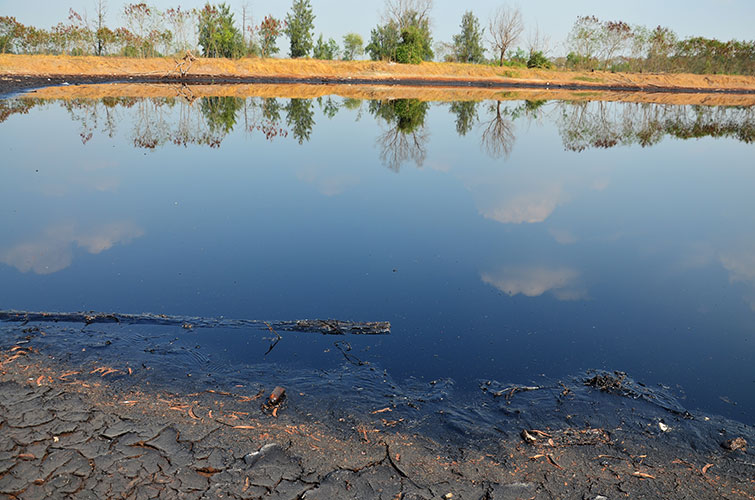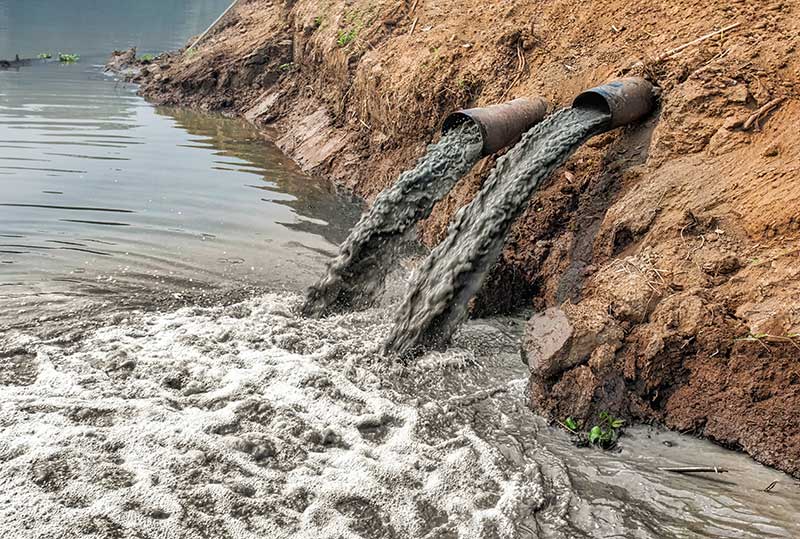Global Inventory of Pollutant Releases
The OECD brings you publications and data on Pollutant Release on Transfer Registers (PRTRs) and presents a tool to explore trends in global releases.
Latest news
- Report: Using PRTR Information to Evaluate Progress Towards the Sustainable Development Goal 12
Access the Executive Summary and video in Spanish
Access the Executive Summary and video in Japanese
Access the Executive Summary and video in French
OECD work on PRTRs
Explore and visualise pollutant releases by country, pollutant or sector
Exploring data from multiple PRTRs simultaneously provides input on the global picture of pollutant releases. Use the filters above the set of figures below to explore PRTR data by country, pollutant, or sector. Note that this beta presentation of the data includes air and water release data from seven PRTRs and 14 pollutants; it does not include all PRTRs, all pollutants reported to these PRTRs, or releases to land.
The data presented in the charts below can be downloaded by clicking on the CSV button under the figures.
Access the data
To access the full datasets from each of the PRTRs, including all reported chemicals, sectors, and release pathways, go to the PRTR Data Centre via Internet Explorer or Firefox or download all the data in Excel here.
The purpose of the PRTR Data Centre is to share PRTR data as widely as possible within the OECD area. Users can create a report of PRTR data according to years, countries, regions, industry sectors, chemicals, types of release sources, and types of releases and transfers.
Factors to consider when using the data
Most of the PRTR systems established to date were designed to meet the needs of a specific country or region, with less attention being given to the comparability of the data among different PRTRs. Consequently, PRTRs have differing reporting requirements. Their respective differences confound integration of data across PRTRs and hamper comparative analyses of the data. When compiling and analysing data across multiple PRTRs, users must consider the impacts of these differences on the results. The most significant differences are in the reporting thresholds, sectors or activities covered, and pollutants covered by each PRTR.
- Reporting thresholds vary among PRTRs. Generally, facilities must report to a PRTR only for pollutants they manufacture, use, or release to the environment above certain minimum threshold quantities. Pollutant thresholds can vary substantially among PRTRs, which may have considerable impacts on reported releases. For example, facilities in Canada are required to report releases of mercury if they manufactured, processed, or otherwise used 5 kg or more of mercury within a calendar year, while facilities in Europe are required to report releases of mercury if they released more than 10 kg to air or 1 kg to water within a calendar year.
- Sectors covered differ across PRTRs. The PRTRs included in this analysis cover different economic activities. Most PRTRs define which facilities must report based on their industrial sector, although for the E-PRTR, reporting requirements are based on activities at the facility rather than the facility’s sector classification. Facilities are required to report to E-PRTR only those releases related to the covered activities, rather than all releases at the facility. As a result, releases reported to E-PRTR are less inclusive than releases reported by similar facilities to other PRTRs.
- Each PRTR defines which pollutants must be reported. While many common industrial pollutants are covered by most PRTRs, pollutant lists vary substantially among PRTRs. These differences must be considered when PRTRs are compared.
- The type and magnitude of economic activity varies by country. Differences in the magnitude of releases among PRTRs may be due to differences in the level and type of economic activity in the country or region.
- Methods used to estimate releases differ. In addition to the limitations introduced by compiling release data from multiple PRTRs, PRTR data have inherent limitations that affect all PRTRs. For example, data included in PRTRs are reported by facilities, which may differ in the methods they use to determine the quantities of pollutants released.
- Toxicity factors include inherent uncertainty. For the toxicity impact score results, there is uncertainty in the characterization factors, developed by USEtox, particularly for metals. The USEtox model has some inherent uncertainty, as it models factors such as environmental fate and exposure; actual fate of and exposure to a chemical depend on factors specific to its release, such as the exact location and the prevailing environmental conditions there.
See OECD’s Using Pollutant Release and Transfer Register (PRTR) Information to Evaluate Progress Towards the United Nations’ Sustainable Development Goal 12 for more information on these factors to consider when reviewing these data.
Resources and publications

Uses of PRTR Data and Tools for their Presentation
This interactive database compiles good practices of the data uses and tools for their presentation, which were gathered from member countries. It could illustrate the varied uses of PRTR data and encourage additional audiences to access PRTR data.
Go to the website

Centre for PRTR data
The Centre for PRTR Data presents national PRTR data from OECD countries at one Internet location (IE & Firefox are recommended). Users can create a report of PRTR data according to years, countries, regions, industry sectors, chemicals, etc. Japan, as a lead country, maintains this website. All data in the Database can also be downloaded from the ‘Access the data’ section above.
Go to the website

Resource Centre for Release Estimation Techniques
This online centre is a web-based clearinghouse of available guidance documents on release estimation techniques among OECD countries. Users can filter the list of documents by countries, target sectors, languages, etc. The OECD maintains this website.
Go to the website

PRTR.net - Global portal to PRTR information
This website provides a global portal to Pollutant Release and Transfer Register (PRTR) information and activities from countries and organisations around the world. The website aims to assist countries in the development, implementation and improvement of PRTR programmes. It is maintained by the OECD, in cooperation with the UNECE.
Go to the website

List of pollutants/reporting sectors
The OECD examined the pollutants and reporting sectors covered by PRTRs around the world to develop a harmonised list of pollutants/reporting sectors that are common to most PRTRs. The findings are presented in the Harmonised List of Pollutants/Sectors. It describes the methods used and resulting lists and provide the harmonised lists in a format that others can use for developing their own pollutant/sector lists or for conducting multi-country analyses.
Download the Excel list

OECD Publications and Council Acts
The OECD has developed publications to assist countries in developing, implementing, and improving PRTRs, and to provide guidance to stakeholders in understanding and applying PRTR data. A number of OECD Council acts in force are dedicated to chemical safety including two Council Acts on PRTRs.
Read the full story
About us
Learn more about our work on Chemical Safety and Biosafety, and read our progress report.
Stay informed
To receive our latest news, publications and events on Chemical Safety and Biotechnology, sign up to the following newsletters:
Follow us
 Watch our videos on the OECD Chemical Safety and Biosafety YouTube channel
Watch our videos on the OECD Chemical Safety and Biosafety YouTube channel
 Follow us on Twitter
Follow us on Twitter
Contact us
Learn more about the work of the OECD Environment Directorate, and contact us with your questions.
